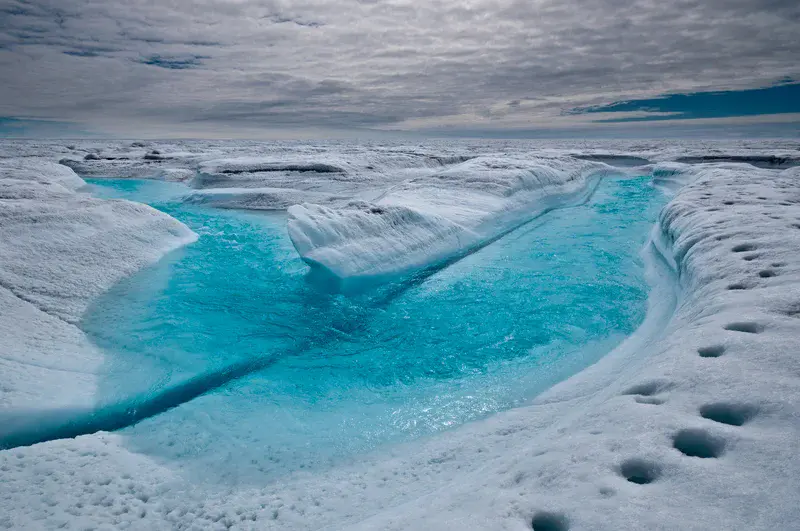Modelling ice sheet response to abrupt climate changes to understand their role in Dansgaard–Oeschger events
This PhD project will use complex and state-of-the-art coupled climate-ice sheet modelling to investigate how ice sheets responded to abrupt climate changes that occurred during the last glacial period (80,000-30,000 years ago). The research will answer longstanding conundrums on the role of ice sheets in abrupt climate changes and provide context to the cascade of tipping points that future climate changes could trigger.

During glacial periods approximately 80,000 to 30,000 years ago, the climate underwent significant and rapid changes known as Dansgaard–Oeschger (D-O) events, which were linked to changes in global climate and ocean circulation. Abrupt cooling episodes were initially thought to be caused by the catastrophic discharge of armadas of icebergs from the North American and Eurasian ice sheets, known as ‘Heinrich events’, which, it was hypothesised, inhibited the formation of ocean deep water in the high latitudes, slowing down Atlantic Ocean circulation and reducing the poleward transfer of heat from the Tropics. However, it was later determined that these icebergs likely emerged after the cooling events, suggesting that they were more a consequence of the climatic shifts rather than a cause.
Theoretical models of the Atlantic Meridional Overturning Circulation (AMOC) revealed that it can exist in multiple states of stability. Breakthroughs in high-performance computing over the last decade have enabled complex climate models to be run for multiple millennia, and some have shown oscillations and spontaneous shifts in AMOC. The Climate-ice group at the University of Leeds has played a leading role in research on such millennial-scale variability, identifying a novel advection-convection mechanism responsible for the observed oscillations (Rome et al., 2024) and assessing their sensitivity to factors such as orbital variations, greenhouse gas concentrations, and ice sheet meltwater (Snoll et al., in prep).
We now believe that the existence D-O events, as well as the frequency and timing of abrupt climate changes, results from the combination of the release of meltwater, the geometry of the ice sheets and the intrinsic instabilities of the ocean circulation. Ice sheet and their meltwater thus have an important role in D-O events, but present conundrums. Notably, when AMOC is strong, increased melting of Northern Hemisphere ice sheets due to the associated warming (poleward heat transfer in the Atlantic) should then slow down AMOC and trigger immediate cooling. Instead, strong AMOC conditions have persisted for centuries, potentially fuelled by the strong wind forcing resulting from extensive Northern Hemisphere ice sheets. To better understand the complex interaction between ice sheets and ocean circulation during abrupt climate changes, advanced coupled climate-ice sheet models capable of simulating the multi-millennial co-evolution of climate and ice sheets are essential. Recent advancements in our group have enabled the use of a coupled climate-ice sheet model (FAMOUS-BISICLES) to explore these interactions effectively. Previous PhD and postdoctoral projects have focussed on the last two deglaciations and provide a solid foundation to investigate climate-ice sheet feedbacks during D-O events.
For this PhD project, you will investigate the response of ice sheets to abrupt changes in ocean circulation using the FAMOUS-BISICLES coupled climate-ice sheet model to simulate the Marine Isotope Stage 3 period (MIS3, 60–30 thousand years ago). The research will incorporate advanced modelling techniques, including sensitivity analysis, emulation and machine learning.
The thesis will consist of at least three main chapters, which could, for example, be organised as follows:
1) the impact of sudden warming and AMOC resumption on Northern Hemisphere ice sheets during MIS3 events,
2) the effects of AMOC shutdown on ice sheets and the associated iceberg discharge during Heinrich events, and
3) the role of ice sheet meltwater feedbacks in the mechanism driving D-O events.
Results will be compared with observational data to contribute to the understanding of past and future ice sheet dynamics.
With this information, we can finally understand how the ice sheets, ocean circulation and surface climate interact during periods of rapid change, offering deep insight into the cascade of tipping points that we know has led to catastrophic change in the past, and has in recent years begun to be foreshadowed for the near future.
